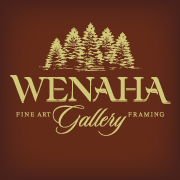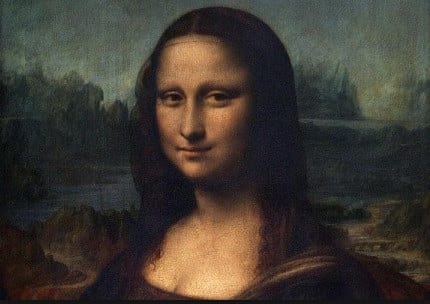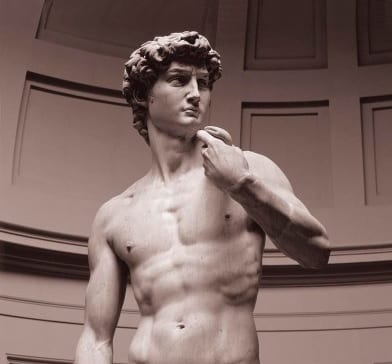Why the World Needs Artists
For those who keep up on educational buzzwords, trends, and movements, it is understandable if they question why the world could possibly need artists.
After all, STEM — Science, Technology, Engineering and Mathematics — is where it’s at. One website, iseek.org, lays it out bluntly by saying,
“Think about key skills needed in today’s workplace: problem solving, analytical thinking, and the ability to work independently. What do they all have in common? They’re all related to STEM (science, technology, engineering, and math).”
Not much room for artists — and their legendary tendency toward being sensitive, moody, emotional, affective, and temperamental — there.
But contrary to limited, traditional thinking, art — and artists — do not operate outside of the realms of reality. Rather, they are firmly entrenched within it, and in the same way that science, and technology, and engineering, and math, seek and pursue (or should seek and pursue) truth, so also do artists.
They just do it differently.
In the laboratory, scientists study all sorts of facts to find truth: they research air quality, and public policy is based upon their findings; they investigate germs and diseases; they explore nutrition; they even delve in the deep recesses of the human mind, and try to figure out why we behave the way we do, sometimes, unfortunately, for no other reason than to sell us a product. (Yes, this is a simplistic overview, but so also is the limiting of intellectual human energy to four areas.)
The province of science, we are told, is to study, discover, report, and work with truth, and so high do we esteem the work of the STEM disciplines that we treat what their members say with an almost religious fervor. If Science so declares, then it must be true.
But not all truths are able to be seen, swished about in a test tube, or neatly graphed, and these truths are the ones that artists delve in. Honesty, integrity, compassion, beauty, patience, perseverance, determination, loyalty, peace, hope — these are good things that are also real things, and when humans strive for them, further good things — that are not necessarily items that we can touch, or buy, or park in our driveway — abound.
Conversely, there are truths on the opposite end of the spectrum — envy, hate, bitterness, despair, cunning, manipulation, horror, pride, fear — that, when we pursue them, draw out the worst in us.
These are the areas, bad and good, that artists research, study, analyze, scrutinize, explore, define and communicate to the world around them. While there is a stereotype that artists are weird people, self-absorbed and mumbling to themselves in their garret studios (and frankly, we can thank mass media and popular culture for promoting this ), many artists are as level-headed and intelligent as we accord to the STEM crowd.
Artists are the canaries in the mine, warning society when it is on the wrong track, encouraging it when it moves toward something good. They see where we are going before we get there; they identify the good truths that can be and the bad options that entice. Some artists make a point of promoting and elevating good truths so that others can grasp and understand them. Other artists are fascinated by darkness, cynicism, and despair, and their best contribution is to show us how we don’t want to be. (Not all artists, in the same way that not all STEM sorts, use their gifts for good.)
Though we insist upon doing so, we really cannot divide ourselves, as humans, into exclusively black and white, left brain and right brain, scientists and artists, because there is a little bit of both in all of us, and we need both elements. To deny one, at the expense of the other, makes losers of us all.
Life without science, applied and conceptual, would be a dark, dull place, because we humans are creative beings, always looking to do something a better, faster, more intriguing way.
But life without art would be a cold, barren wasteland — one without color, emotion, form, touch, or, frankly, humanity — because that is what artists do: they open our eyes and our souls to our humanity.
In a society that promotes engineers, mathematicians, scientists, and technicians as the highest forms of helpers to mankind, artists are not valued for the deep and abiding contributions they make, but let us not be deceived: building bridges and developing treatments for cancer are vitally important, but so also is showing us the deep, unseen truths that transcend our five senses.
This is what artists do.
 Wenaha Gallery supports art and artists by offering original two- and three-dimensional work by Pacific Northwest artists; art edition prints from Greenwich Workshops; and custom framing of treasured art pieces and mementos of our local and regional clientele.
Wenaha Gallery supports art and artists by offering original two- and three-dimensional work by Pacific Northwest artists; art edition prints from Greenwich Workshops; and custom framing of treasured art pieces and mementos of our local and regional clientele.
Contact the gallery, located at 219 East Main Street, Dayton, WA, by phone at 509.382.2124 or e-mail art@wenaha.com. Gallery hours are 9 a.m. to 6 p.m. from Monday through Saturday, and by appointment. Visit the Wenaha Gallery website online at www.wenaha.com.
Wenaha Gallery is your destination location for Greenwich Workshop Fine Art Prints, professional customized framing, and original fine art paintings and sculpture by notable Pacific Northwest artists. Books, gifts, note cards, jigsaw puzzles, and more are also available. Visit at 219 East Main, Dayton, WA.
This article was written by Carolyn Henderson.





